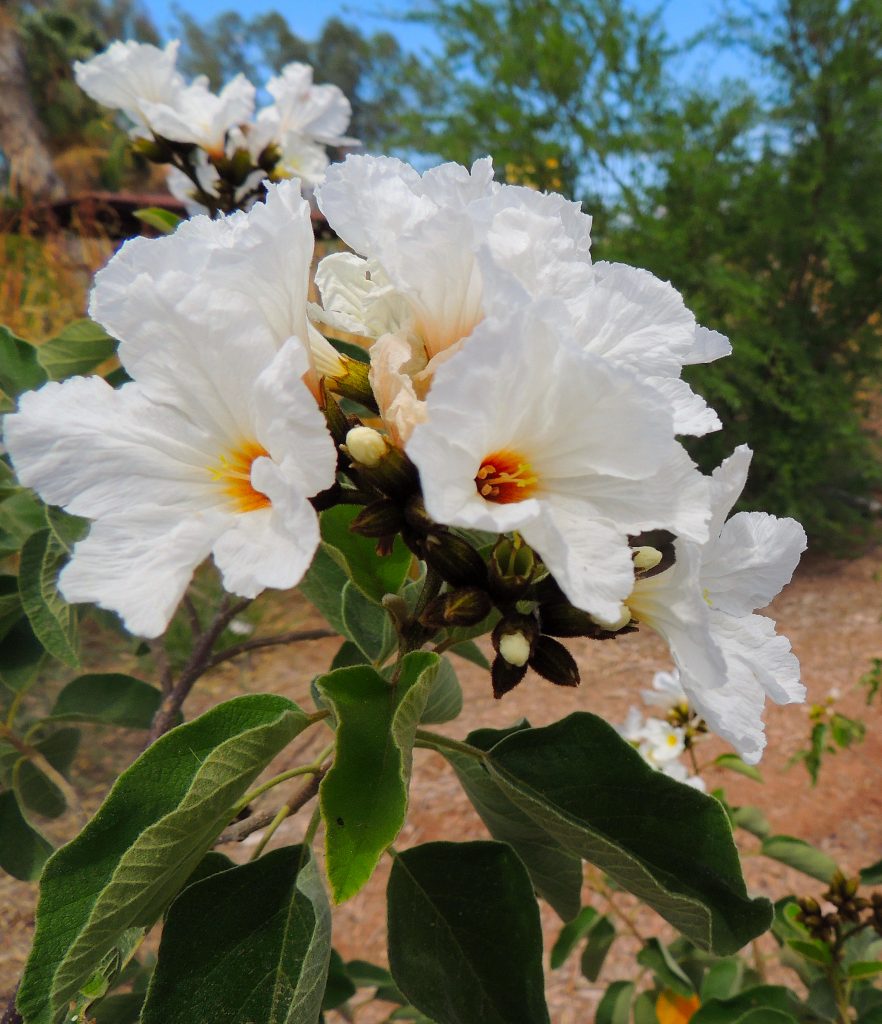Lovely, white blossoms of not one, but two different types of cordia, add welcome beauty to the arid landscape throughout the warm season, including summer. Cordias are large shrubs that are underused in the garden and deserve more attention due to their ability to thrive in full sun and shrug off the summer heat. Their evergreen foliage looks great all year, and their pruning needs are minimal. Let’s take a closer look at these two cordias and why you’ll want to plant them in your landscape.
Texas Olive (Cordia boissieri)
The Texas Olive is a native of Texas and Mexico, and has large, velvety leaves that provide dark green color to outdoor spaces. It is quite versatile as it can be grown as a large shrub or trained into a small tree. The arrival of warm weather in spring will trigger the appearance of trumpet-shaped, white flowers with yellow centers that will continue to bloom off and on through fall. When in flower, Texas olive resembles large, white oleander shrubs and makes a suitable substitute. Once the flowers fade, they produce a green fruit that resembles an olive, which birds love to eat.
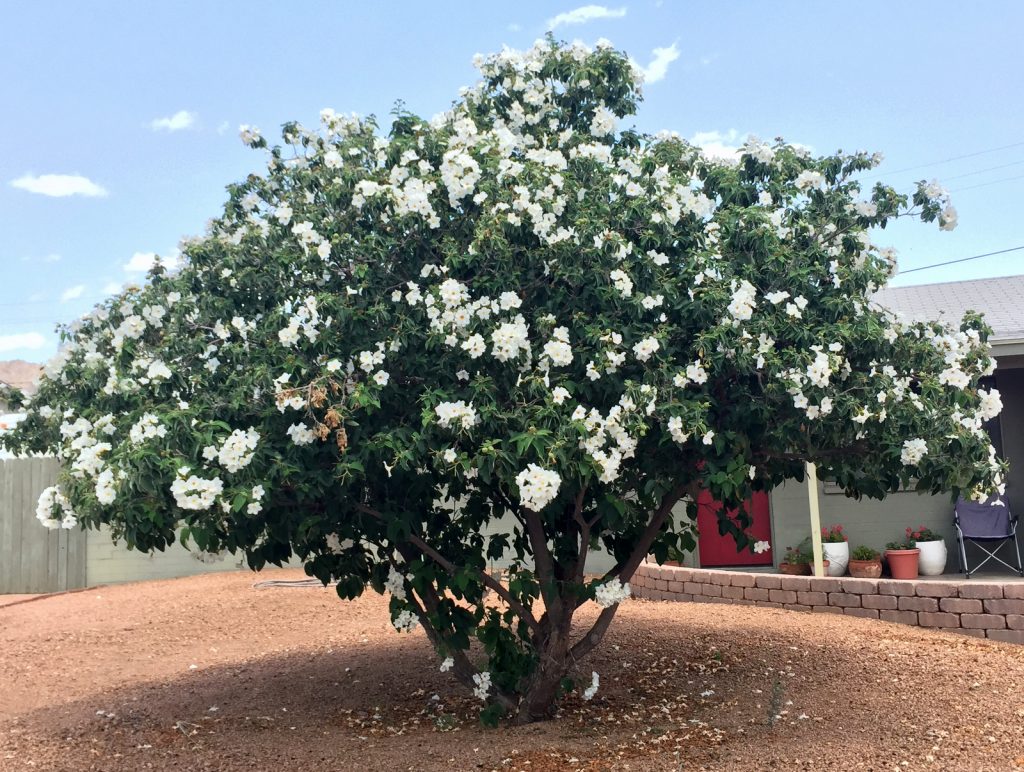
Hardy to 20 degrees F., Texas olive can reach 20 – 25 feet tall and wide. The growth rate of Texas olive is slow to moderate, depending on the availability of water, so be sure to allow plenty of room for it to grow to its mature size. While its pruning requirements are minimal, it does have periods where it produces litter, when the green fruits drop, so it is best to keep it away from swimming pools or water features. When trained as a small tree, it makes a great addition to a sunny patio or can be planted against a west or south-facing wall where its evergreen foliage provides a nice splash of evergreen color.
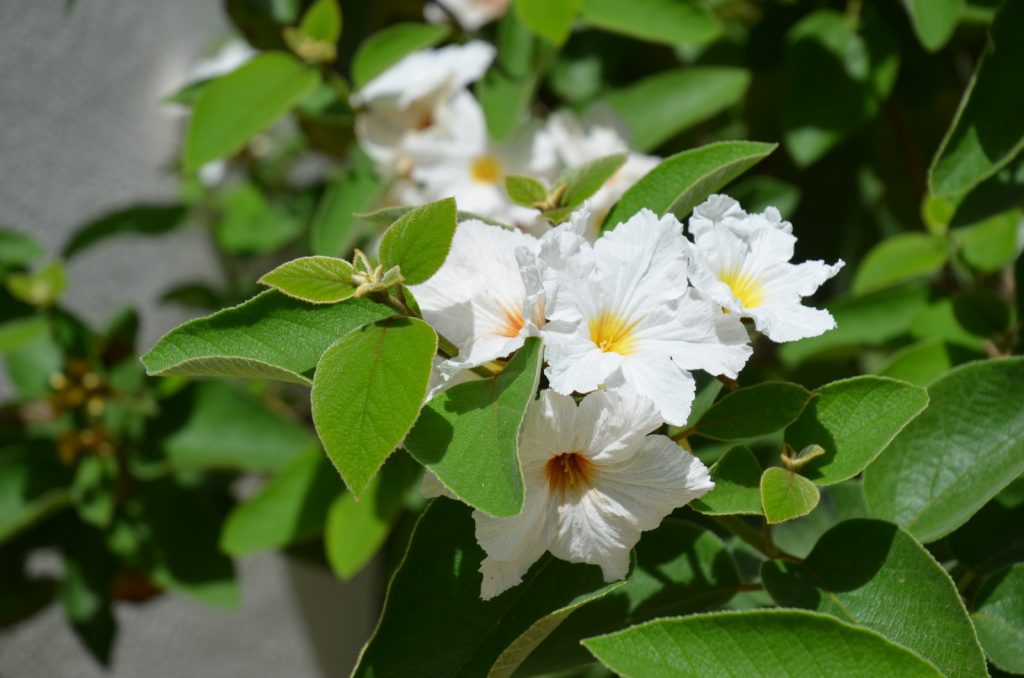
Little Leaf Cordia (Cordia parviflora)
The Little Leaf Cordia is another type of cordia that is worth adding to the drought tolerant landscape. Native to the desert regions of Mexico, this cordia is more cold tolerant than its cousin. As its name suggests, its leaves are rather small and provide muted shades of green in the garden. It is hard to find a tougher shrub for the desert landscape, which thrives despite brutally hot, summer temperatures as well as cold winter temperatures that dip into the teens. In spring, papery white flowers appear which add a rather delicate beauty to this hardy desert native and blooming occurs sporadically through fall, often in response to increased humidity.
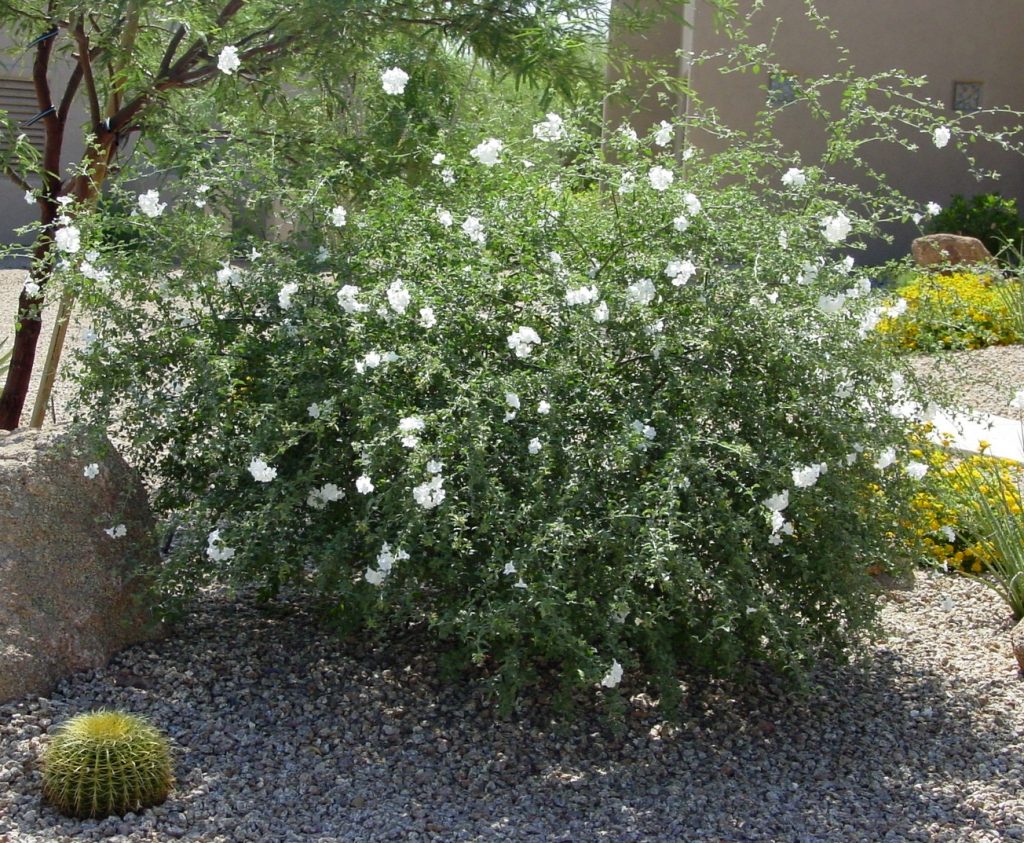
The informal growth habit of little leaf cordia makes it best suited for landscapes with a natural theme as it doesn’t take well to formal pruning, which also decreases the flower production. Plant in areas that receive full sun where it will thrive. The mature size of this cordia species can vary from 4 – 8 feet tall and wide. Pruning isn’t needed every year, as long as it has enough room to grow and should be limited to periodic hand pruning to remove old, woody branches. Use in areas where low-litter plants are appreciated such as alongside pools or enclosed courtyards.
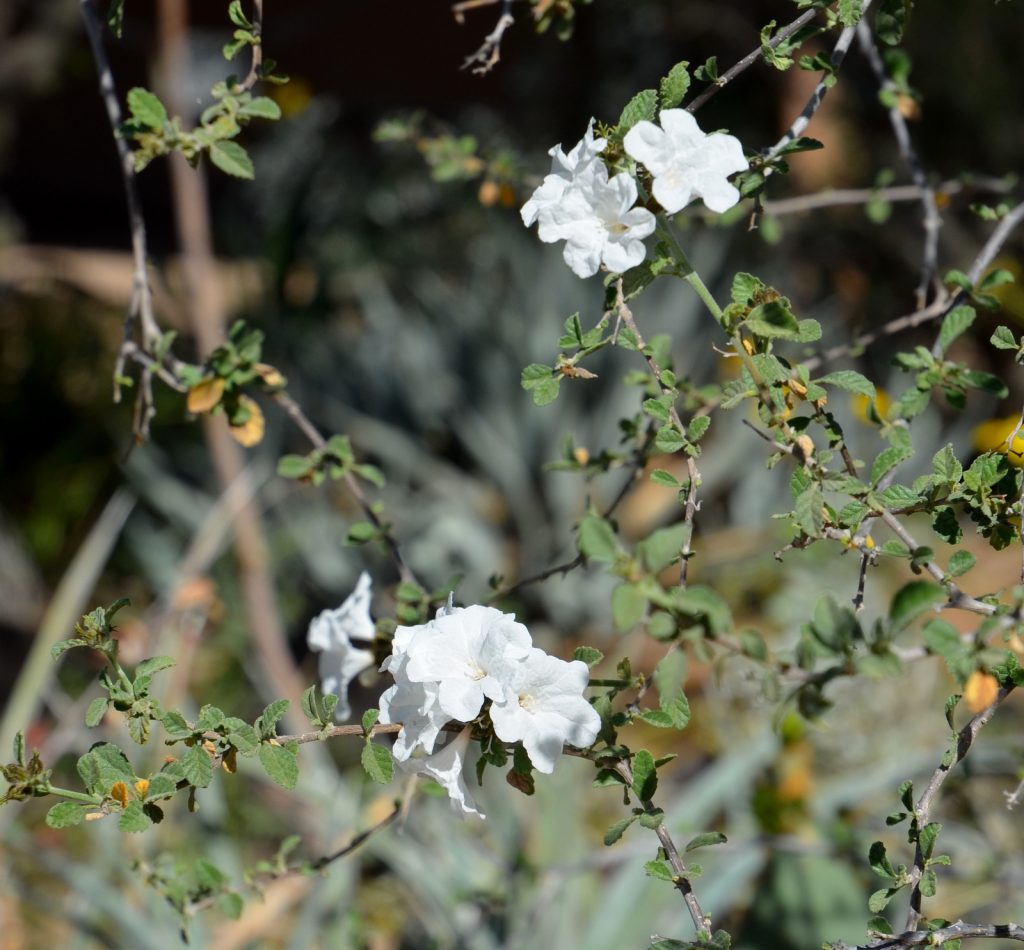
Did you know that up to 70 percent of water use is outdoors? That’s why we love desert plants and feature them each month. It’s still a great time to plant non-tropical plants in your landscape, and you can learn more about Eremophilas and other plants on our Arizona Low-Water-Use Plants page. Visit our page on Choosing and Planting Low Water-Use Plants for tips on plant selection and how to plant properly. Also, be sure to read through all of our featured Plant of the Month blogs!
From time to time, Water – Use It Wisely features guest bloggers who write about topics related to water and water conservation. Noelle Johnson is an urban horticulturist, Certified Arborist and freelance garden-writer who helps people create beautiful, low-maintenance gardens through helpful advice on her blog www.azplantlady.com. She is passionate about teaching people about the amazing desert plants that thrive in our landscapes.


